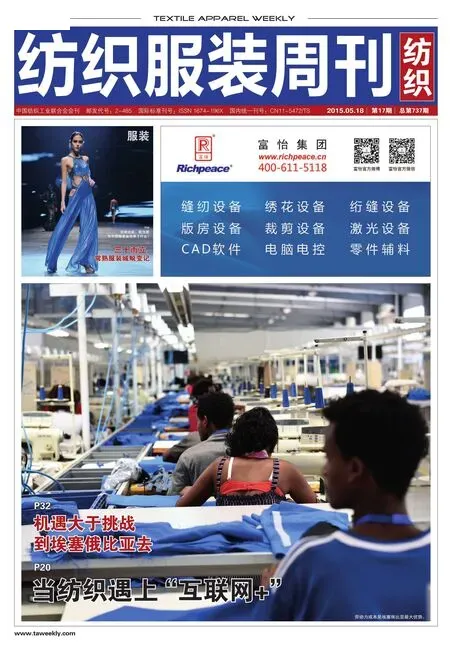Trade with “One Belt and One Road”
2015-02-06
Trade with “One Belt and One Road”
According to Shen danyang- a spokesman of the Ministry of Commerce, in terms of foreign trade, the bilateral trade volume between China and the countries along “One Belt and One Road” in the first quarter reached US$ 236 billion, accounting for 26% of the total import and export.
China’s export to the countries alongside was US$144.5 billion, up 10%, accounting for 28% of the total export, and higher than the growth of the whole export; import from the countries alongside was US$ 91.5 billion, accounting for 23.4% of the total import.
Shen Danyang said, in terms of attracting foreign capital, in the first quarter, the countries along “One Belt and One Road” set 457 foreign-invested enterprises in China, up 18.4%, the actual amount of foreign investment of US$1.68 billion. Overall actual investment amount from Mongolia, Russia and the countries of Central Asian increased more than one time. Overall actual investment amount from countries in Eastern Europe, West Asia and North Africa grew more than four times. The countries along “One Belt and One Road” set 50 projects in Guangdong province, up 6.4%. The countries along “One Belt and One Road” set 22 projects in Fujian province,up 100%.
China’s export to the alongside countries was US$144.5 billion, up 10%, accounting for 28% of the total export, and higher than the growth of the whole export. The top three countries and regions were Singapore, Indonesia and Laos, investment values were US$0.57billion, US$0.3billion and US$0.26billion, respectively.
In addition, China’s overseas trade and economic cooperation zones with countries along the Belt and the Road saw a sound momentum of development. At present, China has over 70 projects of cooperation zones underway in countries along the Belt and the Road, with more than US$8 billion investment in infrastructure, leading an investment of about US$10 billion from enterprises within the zones. The annual output value is estimated to exceed US$20 billion and is able to create 200,000 jobs for local people.
FTZs are facing development opportunities
Recently, the State Council issued notices, approved the “China (Guangdong) free trade zone overall plan”, “China (Tianjin) free trade zone overall plan”, “China (Fujian) free trade zone overall plan” and “Further deepen reform and opening up China (Shanghai) pilot free trade zone”. At the same time, the State Council issued the Special Administration Measures on Foreign Investment Access to the China (Shanghai) Pilot Free Trade Zone, commonly known as the Negative List. China (Shanghai,Guangdong, Tianjin, Fujian) four Pilot Free Trade Zones will share the Negative list. The Negative list has 122 special management measures.
Along with the expansion of Shanghai’s free trade zone, and the newly established free trade zones in Guangdong and Fujian provinces as well as Tianjin, the FTZs has entered the “2.0 version”. It said that the Shanghai FTZ has made “positive progress” over more than a year, generating a model that can be replicated elsewhere. 4 FTZs have become upgraded economy versions and will catalyze new engines to drive economic growth.
The construction of the Shanghai FTZ will be integrated with the construction of an international financial center. The Guangdong FTZ will aim for better economic cooperation with Hong Kong and Macau. The Tianjing FTZ, which will include areas around the city’s port and airport and the Binhai New Area, is positioned to promote the integrated development of Beijing, Tianjin and Hebei. With its proximity to Taiwan, the Fujian FTZ, which will play a role in boosting crossstrait ties. The 4 FTZs will continue working for institutional innovation, enterprise development and job creation.
China’s textile and apparel exports grew weakly
According to the Customs statistics, China’s total import and export in the first quarter of 2015 reached RMB 5.54 trillion, down 6% year-on-year (the same below) . The export was RMB 3.15 trillion, up 4.9%, and import RMB 2.39 trillion, down 17.3%. The trade surplus was RMB 755.3 billion, up 6.1 times.
According to the Customs statistics, China’s textile and apparel exports in the first quarter of 2015 reached RMB 366.135 billion, up 3.10% year-on-year. Among which, China’s exports of textile yarn, fabrics and textile products was RMB 146.932 billion, up 4.40%. China’s exports of apparel and clothing accessories was RMB 219.240 billion, up 2.20%.
In terms of the U.S. dollar, China’s textile and apparel exports in the first quarter of 2015 reached US$ 59.777 billion, up 2.9% year on year. Among which, China’s exports of textile yarn, fabrics and textile products was US$ 23.987 billion, up 4.2%. China’s exports of apparel and clothing accessories was US$ 35.790 billion, up 2.0%.
In terms of the main export markets, the U.S. market had a relatively good performance. Other markets still had a slow recovery. There was insufficient internal impetus driving economic growth. The demand had no significant improving. Therefore, China’s textile and apparel exports grew weakly.
Yarn's import and export in the first quater
According to relevant data released by China customs, in the first quarter of 2015, Yarn’s import and export volume was 1,681,000 tons, an increase of 5.6% year-on-year. Yarn’s import and export value was US$ 4,930 million, down 3.3% year-on-year. Among them, yarn’s export volume was 931,000 tons, up 1.9% year-onyear. yarn’s export value was US$ 2,700 million, down 5.2% year-on-year.
In the first quarter, China’s yarn exports to ASEAN was 147,000 tons, down 0.4%. Among which, China’s yarn export to Burma was US$ 20 million, the biggest growth of 27%. China’s yarn export to Indonesia was US$ 70 million, up 2%. China’s yarn export to Kampuchea was US$ 50 million, up 13.2%. China’s yarn export to Vietnam was US$ 190 million, down 22.7%.
Translated by Zhou Hongmei
